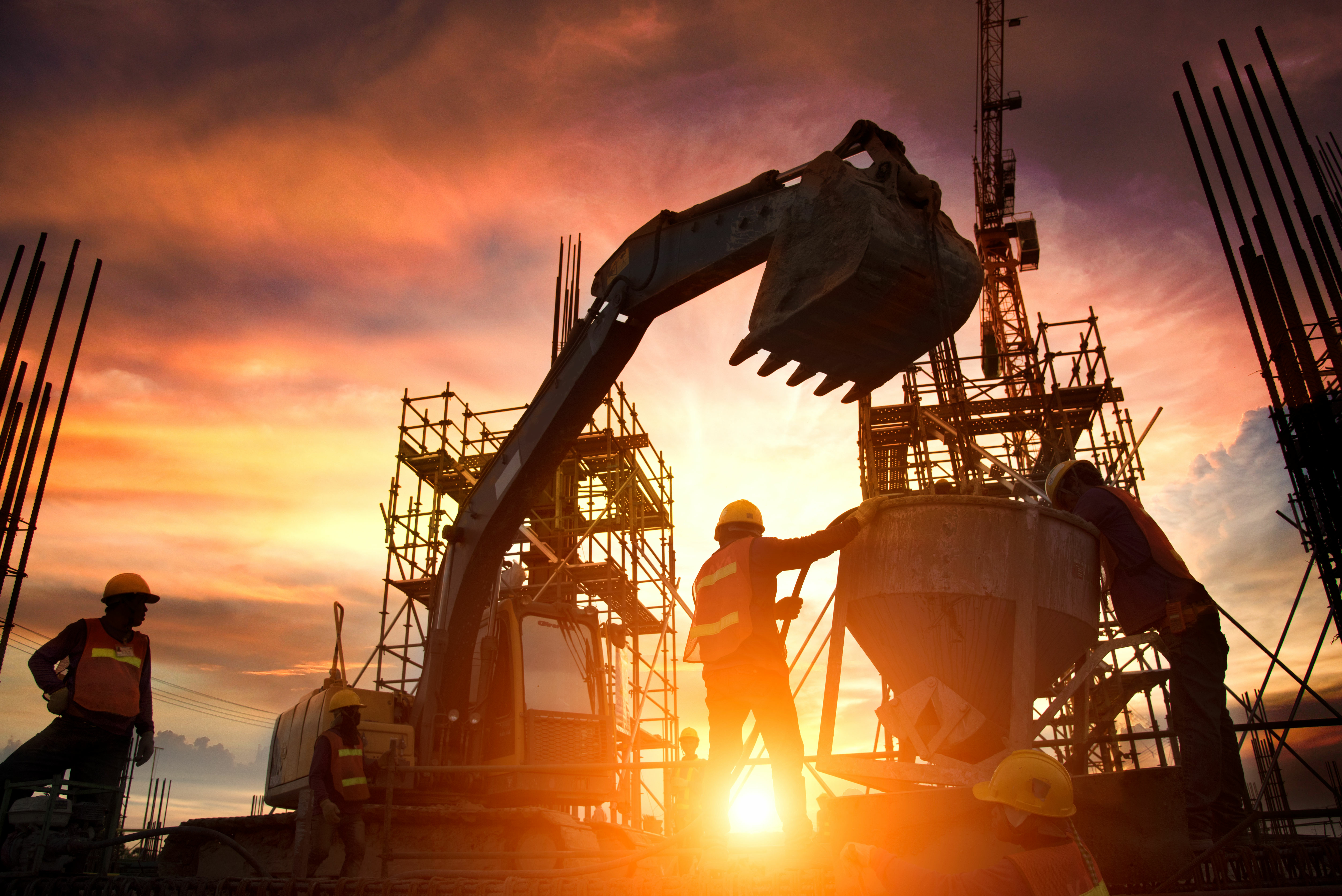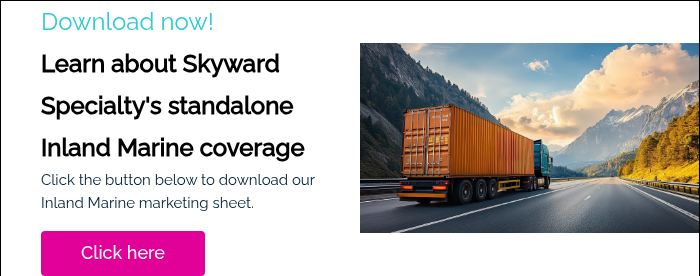As a Senior Construction Inland Marine Underwriter, I work closely with agents and brokers to ensure their clients’ commercial construction projects are adequately covered. However, inland marine insurance often creates confusion due to its unique nature and the range of coverages it provides. For agents and brokers working in the construction insurance sector, understanding these differences is crucial for identifying potential gaps and offering the most comprehensive solutions to clients.
In this post, we will break down key inland marine coverages, explain their differences, and highlight where gaps can occur if coverage isn’t tailored to the construction project's needs.
Inland Marine Insurance Breakdown: Comparing Coverages and Identifying Gaps
Despite the name, inland marine insurance does not cover marine-related risks. Inland Marine policies cover property on land that is in transit, temporarily located at different job sites, or involved in specific industry risks—such as construction. This includes tools, equipment, building materials, and other essential items to complete a project.
Now, let’s dive into the specifics of coverages.
Equipment Floater vs. Contractor’s Equipment
Two of the construction industry's most common inland marine coverages are Equipment Floaters and Contractor’s Equipment.
- Equipment Floater: An Equipment Floater is designed to cover mobile equipment such as cranes, bulldozers, and other heavy machinery. These items are often transported from job site to job site and are exposed to theft, damage or loss during transit.
- Potential Gap: A gap can occur if Equipment Floaters are limited to specific equipment types or exclude certain high-risk machinery.
- Contractor’s Equipment: This coverage is broader and typically includes tools, machinery, and even temporary structures used by the contractor. Unlike an Equipment Floater, which covers equipment in transit, Contractor’s Equipment extends to the equipment on-site, including for incidents like theft, vandalism or accidental damage.
- Potential Gap: If equipment is on-site and not properly covered under Contractor’s Equipment policies, a project may be vulnerable to unanticipated losses.
Builders Risk vs. Installation Floater
Builders Risk and Installation Floaters are essential in construction projects, but they often overlap, leaving room for confusion regarding which one should be used and when.
- Builders Risk: Builders Risk covers a building or structure under construction against damage due to fire, vandalism, theft or certain types of natural disasters. This coverage is generally for completed parts of a structure or materials being used in the building construction.
- Potential Gap: This coverage may not extend to items being installed or stored on-site before installation, which could lead to potential gaps in coverage during those project phases.
- Installation Floater: An Installation Floater, on the other hand, is used to cover materials, equipment, and supplies that are being installed as part of the building process, such as HVAC systems, elevators or specialized machinery. It covers these items while they’re in transit and during installation.
- Potential Gap: An Installation Floater may not cover damage to items already installed and awaiting final completion, which could result in uninsured losses.
Motor Truck Cargo vs. Riggers Liability
In the construction industry, goods are often in transit between job sites or being temporarily stored before installation. Two frequently confusing coverages are Motor Truck Cargo and Riggers Liability. While both cover the transportation of goods, they address different types of risks and situations.
- Motor Truck Cargo (MTC): MTC covers cargo being transported by a motor vehicle, typically over the road. It protects the goods being hauled against damage or loss due to accidents, theft, fire or other covered perils during transit. It’s commonly used by trucking companies or contractors transporting materials, equipment or machinery to job sites. This coverage is applied under bills of lading, contracts of carriage, or other shipping receipts issued by or on behalf of the insured for loss or damage to lawful goods and merchandise in their care, custody, or control (CCC).
- Potential Gap: While MTC protects against loss or damage during transit, it does not typically cover risks associated with loading, unloading, or storage, which may leave the cargo exposed to risks during those stages. Additionally, if the cargo is specialized equipment that requires rigging, this type of coverage may not be sufficient.
- Riggers Liability: Riggers coverage on an inland marine policy is more specialized. It is designed to cover materials, equipment, or machinery during rigging operations, transport, storing (if in conjunction with crane operations), loading or unloading, rigging, hoisting, erection, lowering, placing and removing. However, coverage ceases once the lift is completed. It’s commonly used in projects involving heavy construction equipment, such as cranes, or large machinery, that requires specific handling and transportation methods.
- Potential Gap: Riggers Liability can leave gaps if the transported or stored items are not explicitly related to rigging operations. It’s also essential to ensure that the value of the equipment or materials is correctly assessed, as underreporting can lead to inadequate coverage limits.
If an insured is hauling items in conjunction with a crane and has Riggers Liability coverage under their inland marine policy, the Riggers Liability coverage will provide in-transit coverage. If they are hauling items not in conjunction with the crane, then MTC will be needed.
Leased/Rented vs. Rental Reimbursement
When managing construction projects, it’s common to lease or rent equipment to ensure that specific needs are met. Two coverages often come into play in these situations: Leased/Rented and Rental Reimbursement. While they may sound similar, they address different risks and provide distinct benefits. Here’s a breakdown:
- Leased/Rented: Leased or rented equipment coverage is designed to protect the construction company or contractor from the financial impact of damage to or loss of equipment leased or rented from a third party. This coverage typically extends to repair or replacement costs for equipment that is rented or leased for use on a specific project. It ensures that the contractor is not financially liable for equipment they do not own but are using for the duration of a job.
- Potential Gap: A gap may arise if the rental agreement specifically excludes certain types of damage or if the leased equipment isn’t covered while in transit or during specific operations. Additionally, the value of rented equipment might not be fully insured, exposing the contractor to out-of-pocket expenses if the equipment is damaged or destroyed.
- Rental Reimbursement: This coverage protects the contractor if their equipment becomes damaged and is out of service. It reimburses the contractor for renting substitute equipment while repairs are being made. This is particularly important for contractors who rely heavily on specific machinery or tools to complete projects on time, as delays due to equipment breakdowns can be costly and may lead to missed deadlines.
- Potential Gap: If the coverage limits are too low, a potential gap in Rental Reimbursement could occur, leaving the contractor responsible for a portion of the rental costs. Furthermore, this coverage typically only applies to equipment the contractor owns, not rented equipment, so it's essential to ensure both types of equipment are properly covered under the appropriate policies.
The Importance of Customizing Inland Marine Coverage for Construction Projects
Every construction project is unique, which means each one requires tailored coverage to ensure all risks are adequately addressed.
How Customization Can Bridge Coverage Gaps
- Identifying Specific Risks for Each Project: Not all construction projects are the same, and different jobs may involve other types of equipment, materials, and risks. For instance, a project involving heavy machinery or specialized equipment may require a more robust Inland Marine policy than a residential build with standard tools and materials. By collaborating with me early on, we can assess the project's specific needs and craft coverage that addresses its unique risks, ensuring that no critical items are left out.
- Ensuring Adequate Limits for High-Value Items: Construction projects often involve high-value equipment or materials that may not be fully covered under standard policies. Through an in-depth discussion with agents and brokers, we can ensure that high-value assets are properly valued and that the appropriate coverage limits are in place. By identifying these high-risk items, we can prevent coverage gaps that could arise if the items are underinsured or overlooked entirely.
- Addressing Seasonal or Temporary Risks: Some construction projects may involve seasonal considerations or temporary risks, such as equipment used for a limited time or materials that will only be on-site for a short duration. These risks may not always be covered under a standard inland marine policy. Working with me, we can create tailored coverage that specifically addresses these unique, time-sensitive aspects of a project, ensuring that these temporary or seasonal risks don’t fall through the cracks.
Inland Marine insurance plays a crucial role in protecting construction projects from unforeseen risks, but agents and brokers must ensure they fully understand the nuances of the different coverage types. By recognizing where gaps can occur, you can better tailor policies to provide comprehensive protection for contractors and their projects.
Why Work with a Specialized Inland Marine Underwriter for your client’s construction risks?
By partnering closely with underwriters, agents and brokers can ensure that each construction project’s inland marine coverage is comprehensive, customized and aligned with the contractor's specific needs. An underwriter’s role is to help you identify the coverage gaps that might otherwise be missed so that you can offer clients a more robust and effective insurance solution. Skyward Specialty Construction is here to make sure your clients are fully protected—no matter the complexity of the project. Download our Construction Inland Marine marketing sheet.


